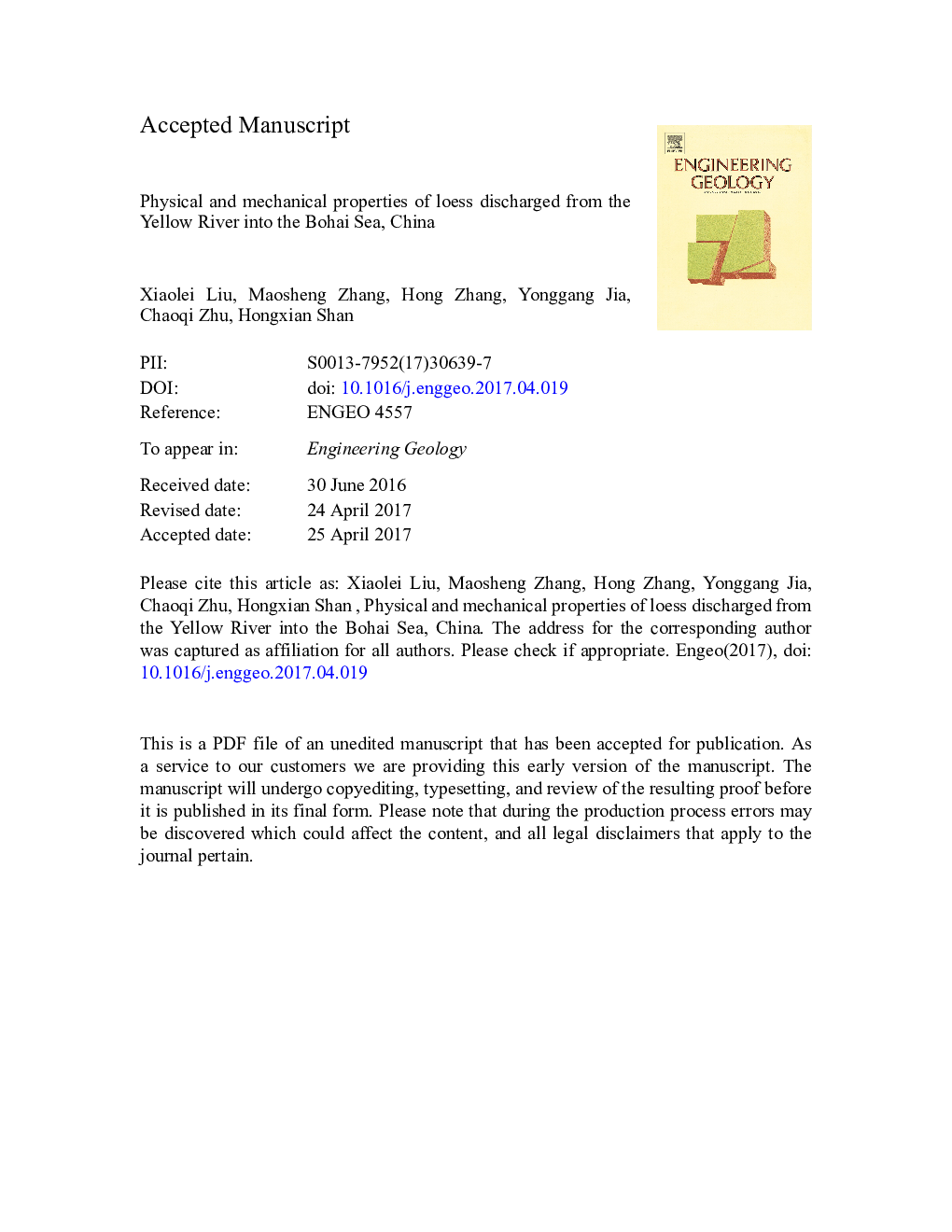| Article ID | Journal | Published Year | Pages | File Type |
|---|---|---|---|---|
| 5787451 | Engineering Geology | 2017 | 31 Pages |
Abstract
Chinese loess is unique in having great scientific value whilst also playing an important role in societal development. Large volumes of loess are continually carried by the Yellow River from the Chinese Loess Plateau to the Bohai Sea, northeast China, forming the Yellow River Delta. The physical and mechanical properties of this loess vary during transportation, and these characteristics have been investigated in detail using several samples of estuarine loess collected from tidal flats with different depositional ages. The wet densities, natural moisture contents, specific gravities, Atterberg limits, grain size distributions, microstructures, and mineral compositions of these samples have been determined. Our results show that the estuarine loess is classified as silty loess, and that its specific gravity, plasticity, and grain size characteristics were very similar to land-derived loess. Its unit weight and water content increasd during discharge into the sea, and its plastic index decreased. The estuarine loess also had fewer large pores that were more closely connected than those in land loess. As a result of these changes in index properties and pore water chemistry, estuarine loess is less susceptible to liquefaction than land-derived loess. In addition, these physical and mechanical properties show strong correlations to the long-term depositional history of the delta, with older deposits typically having a lower dry density and higher void ratio than younger deposits. The results of this study have implications for hazard mitigation and improving our understanding of the mechanisms responsible for loess-related geological disasters.
Keywords
Related Topics
Physical Sciences and Engineering
Earth and Planetary Sciences
Geotechnical Engineering and Engineering Geology
Authors
Xiaolei Liu, Maosheng Zhang, Hong Zhang, Yonggang Jia, Chaoqi Zhu, Hongxian Shan,
